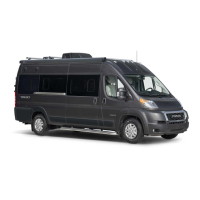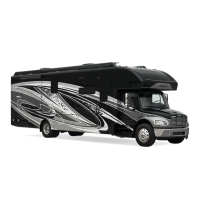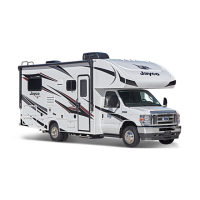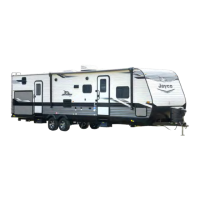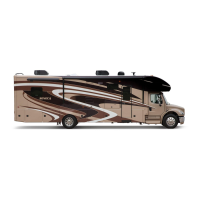66
Faucets
The bathroom, kitchen and outside shower faucets operate much the same way as the faucets
in your home. Make sure there is sucient water available and the 12-volt water pump is
turned ON before operating.
14. After RV water lines have been blown out, remove the air hose and the blowout plug
from the City Water Inlet.
1. Connect the blowout plug to the black tank ush inlet on the outside of the RV.
2. Connect the air hose to the blowout plug. Set the compressor to
3. . Open the black tank drain valve.
4. Blow air into the ush inlet for 30 to 60 seconds.
5. Disconnect the compressor and blowout plug.
6. Close the black tank drain.
TRUMA® Tankless Water Heater (if so equipped)
Your recreation vehicle may be equipped a Truma® Combi furnace with supplementary
indirect water heating. Refer to the Truma Furnace/Water Heater section, along with the
manufacturer’s owner manual, for important operating and safety information.
Bathroom Tub / Shower
Keep the water heater and holding tank capacities in mind when using the fresh water sys-
tem. The used water will drain into the grey water holding tank.
Be sure the water heater is ON and had sucient time to heat the water.
If dry camping, be sure your 12-volt water pump is ON.
Unlike your home, the recreational vehicle does not contain a water pressure balance valve.
If someone is using the shower, it is recommended that the fresh water system
until they are nished.
The shower faucet may include a vacuum breaker for the shower. There are two purposes
for this breaker:
To prevent siphoning water through the hose from another xture.
To prevent water from being retained in the hose.
The showerhead DOES NOT have a complete shut-o valve (the complete shut-o is at the
faucet). The showerhead may drip slightly in the OFF position after use; this is normal and
does not indicate a leak or defect.
Refer the manufacturer’s user guide or label instructions for detailed cleaning information.
The tub/shower walls are made of ABS plastic material. Use a mild detergent soap and warm
water to clean. Do not use gritty or abrasive particle soaps or scouring compound to clean
ABS plastic. Avoid using “Citrus” or biodegradable cleaners which contain “D-Limonene.”
They will damage plastic materials.
Water temperatures over 125°F (49°C) can cause severe burns instantly there-
fore, be careful when using hot water.
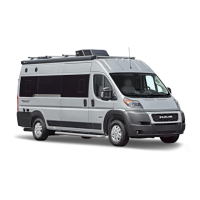
